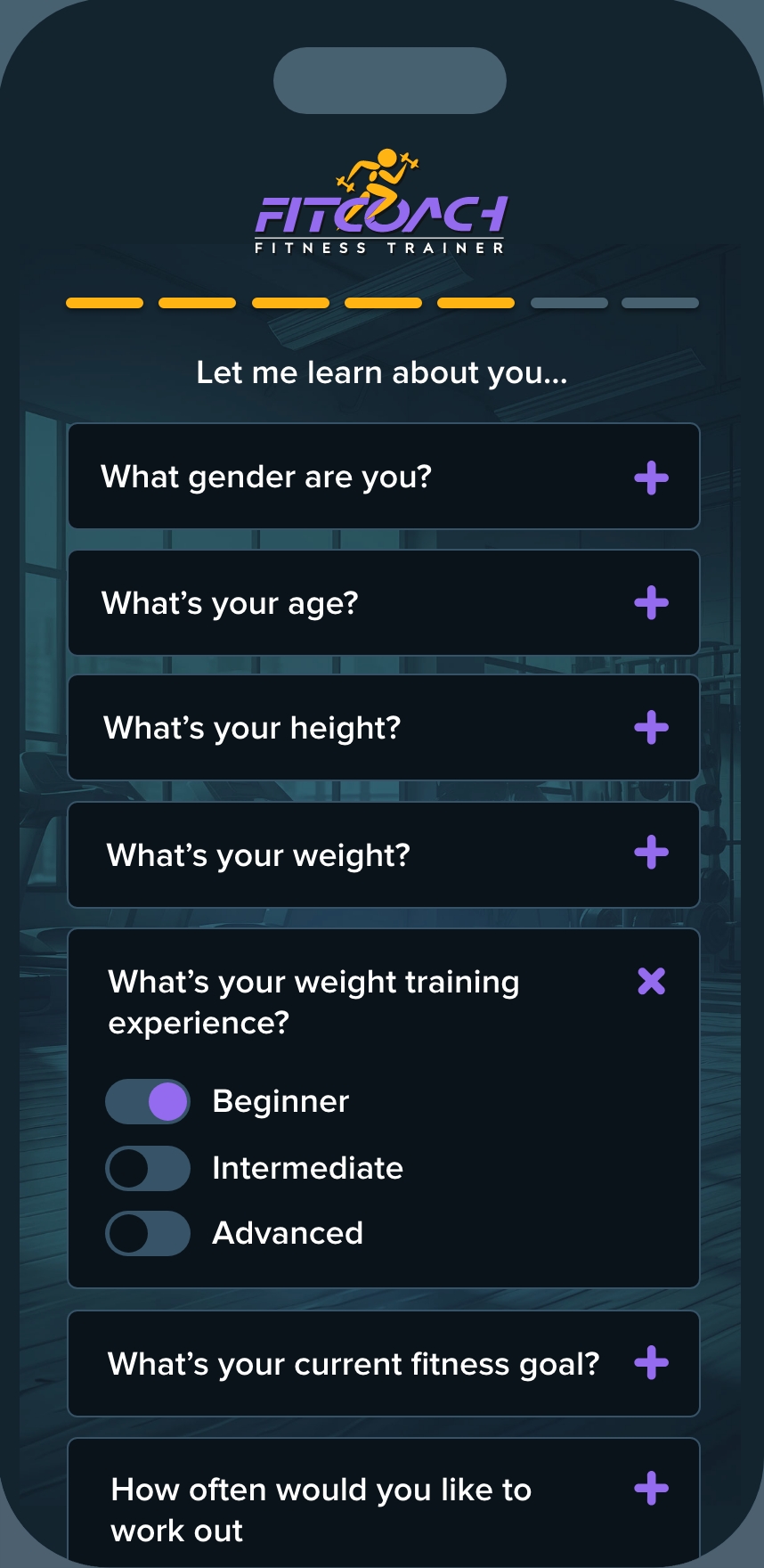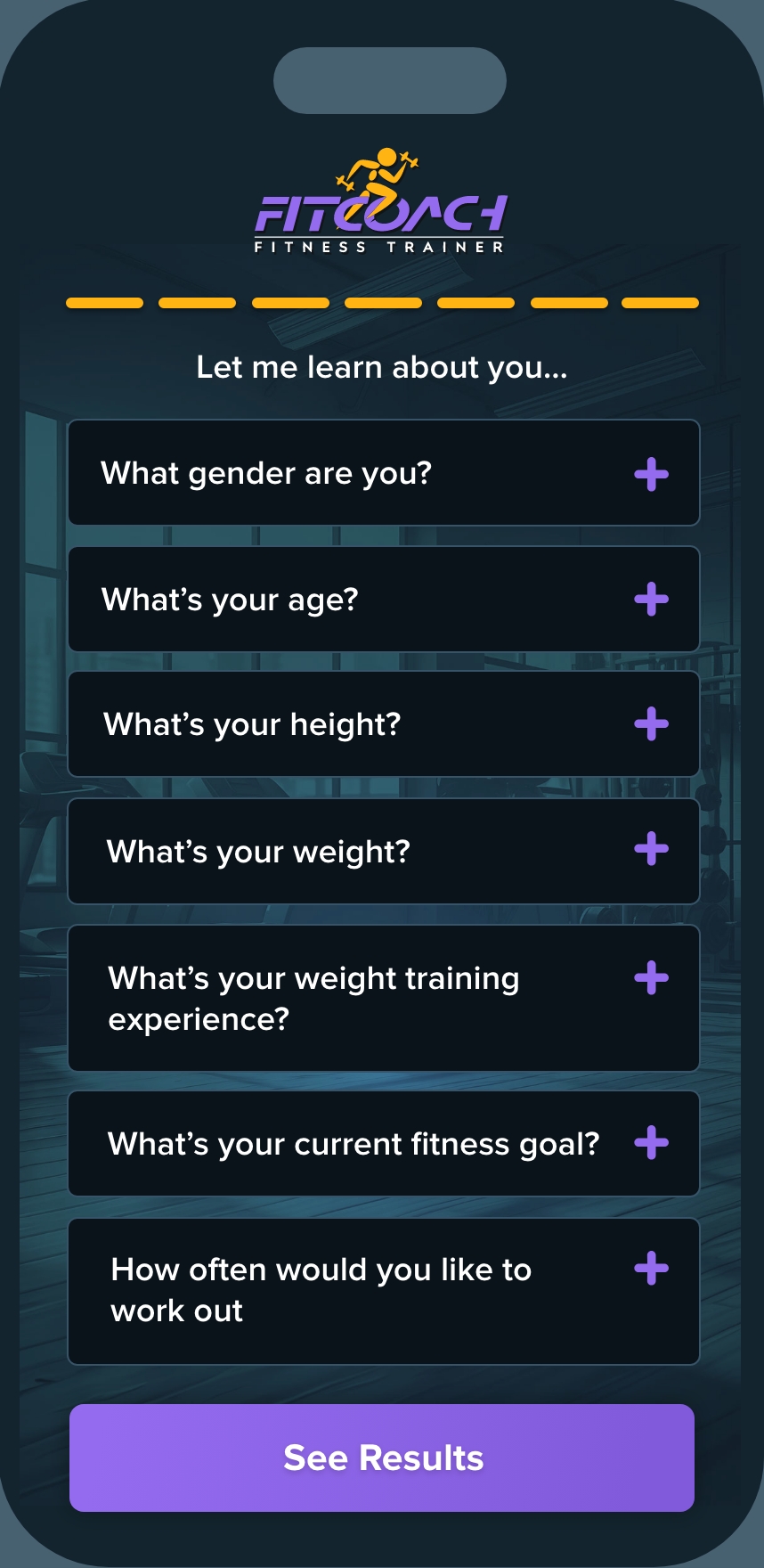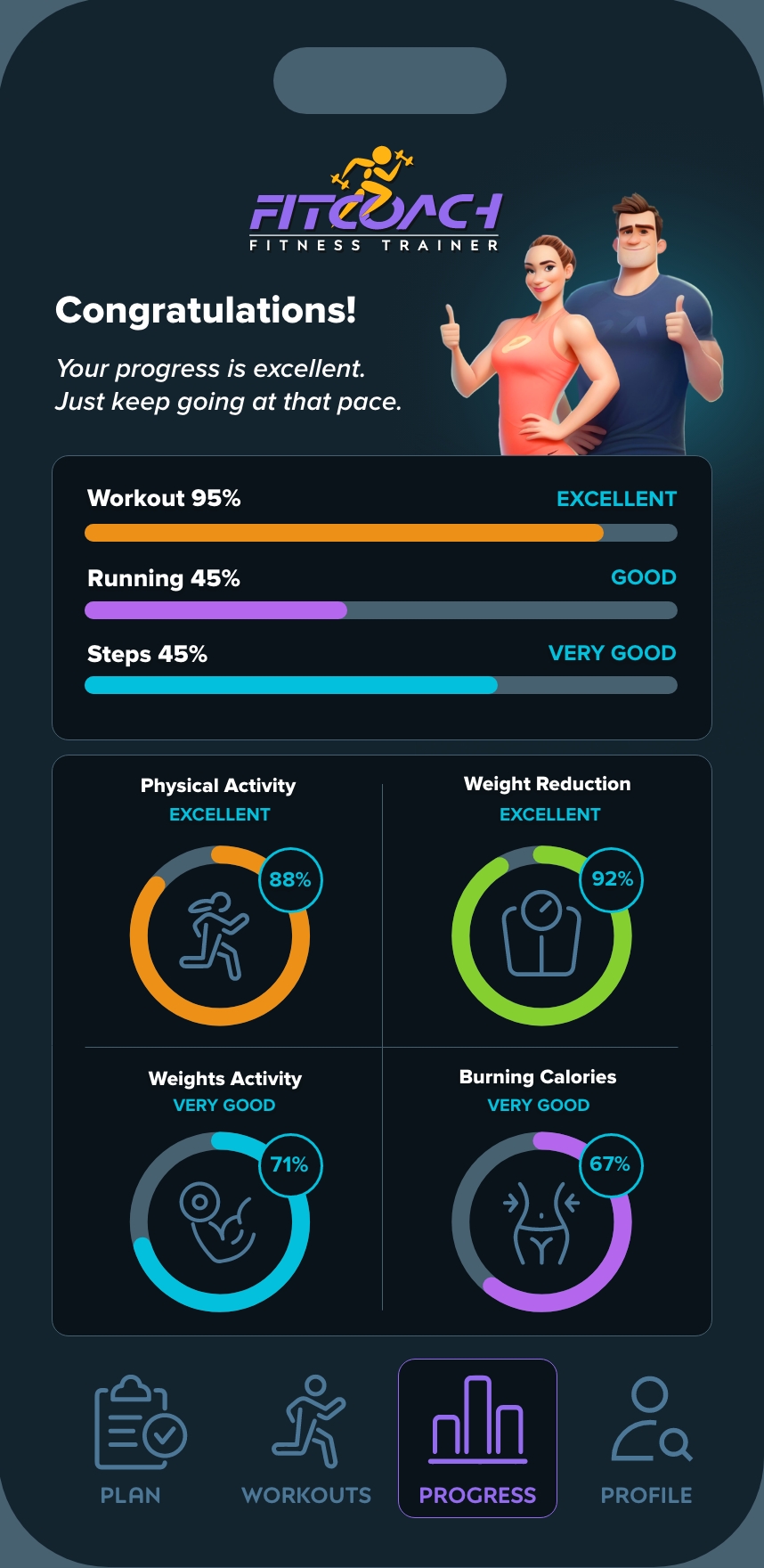In the process of developing FitCoach, I conducted extensive research on existing fitness apps. What I found was a mix of useful features but also confusing interfaces and a bunch of unnecessary screens as well as cluttering the space. It became clear to me that simplicity, visual clarity of display as well as user-friendliness are key aspects that many applications lack.
Further analysis revealed that user motivation plays a key role in maintaining fitness goals. Users crave support and encouragement throughout their journey. FitCoach should prioritize these elements, giving users the motivation they need to stay committed to their fitness efforts.
Wireframing
Before approaching the design, I recorded in detail my user path in several fitness applications. Almost all of them had a commercial character and payment for usage, as well as registration and subscription. When I started making wireframes, I avoided those options and tried to show the most basic screens. However, I would like to mention that such an application for wireframes would have many more screens and functions.
My wireframing at this stage is really the bare minimum of possible work.
Moodboard
When I was initially thinking about this app, I realized that I would like to use some animated characters instead of real people. I wanted the application itself to be in the form of a game with characters like those in Pixar’s animated films. For this purpose, using AI technology, I converted real photos of people into such characters that are like from animated movies. I wanted to avoid the trend in fitness apps that uses photos of real athletes and bodybuilders. I think that a game-style application, by itself, can give additional stimulus and energy to potential users.











